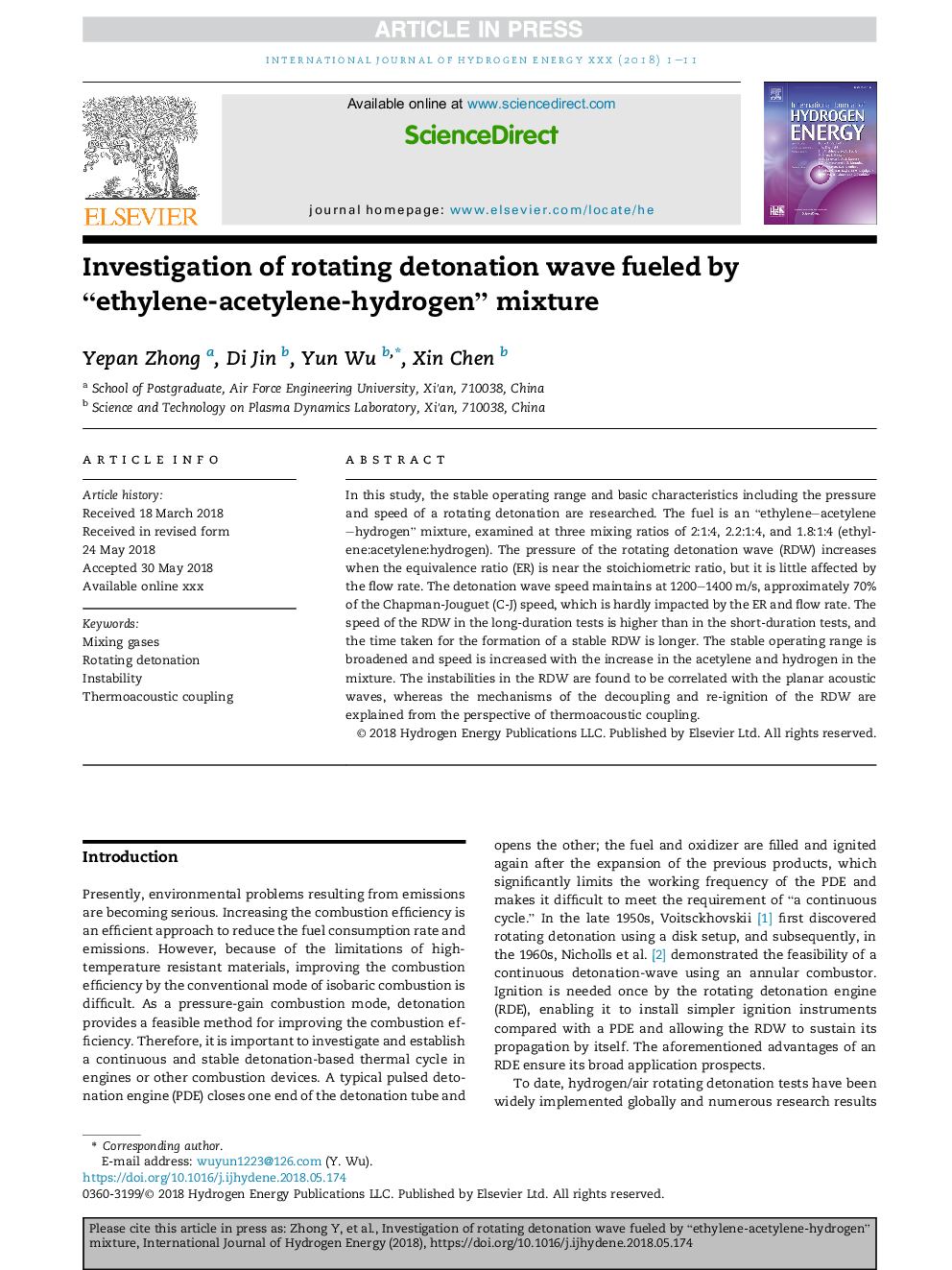| Article ID | Journal | Published Year | Pages | File Type |
|---|---|---|---|---|
| 7705435 | International Journal of Hydrogen Energy | 2018 | 11 Pages |
Abstract
In this study, the stable operating range and basic characteristics including the pressure and speed of a rotating detonation are researched. The fuel is an “ethylene-acetylene-hydrogen” mixture, examined at three mixing ratios of 2:1:4, 2.2:1:4, and 1.8:1:4 (ethylene:acetylene:hydrogen). The pressure of the rotating detonation wave (RDW) increases when the equivalence ratio (ER) is near the stoichiometric ratio, but it is little affected by the flow rate. The detonation wave speed maintains at 1200-1400Â m/s, approximately 70% of the Chapman-Jouguet (C-J) speed, which is hardly impacted by the ER and flow rate. The speed of the RDW in the long-duration tests is higher than in the short-duration tests, and the time taken for the formation of a stable RDW is longer. The stable operating range is broadened and speed is increased with the increase in the acetylene and hydrogen in the mixture. The instabilities in the RDW are found to be correlated with the planar acoustic waves, whereas the mechanisms of the decoupling and re-ignition of the RDW are explained from the perspective of thermoacoustic coupling.
Keywords
Related Topics
Physical Sciences and Engineering
Chemistry
Electrochemistry
Authors
Yepan Zhong, Di Jin, Yun Wu, Xin Chen,
